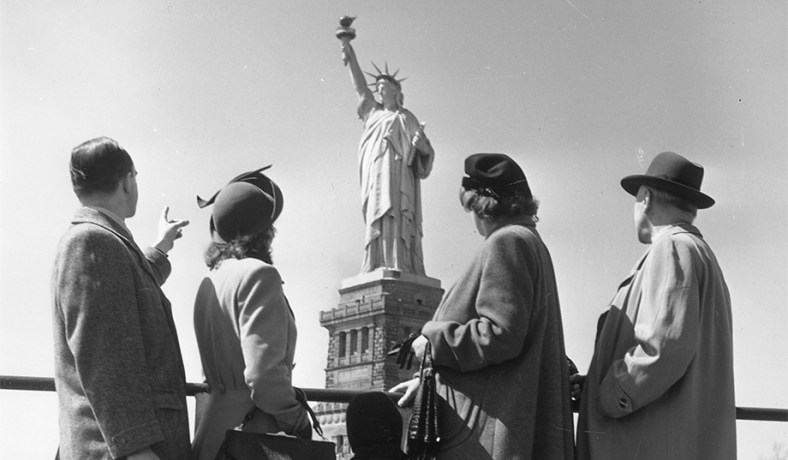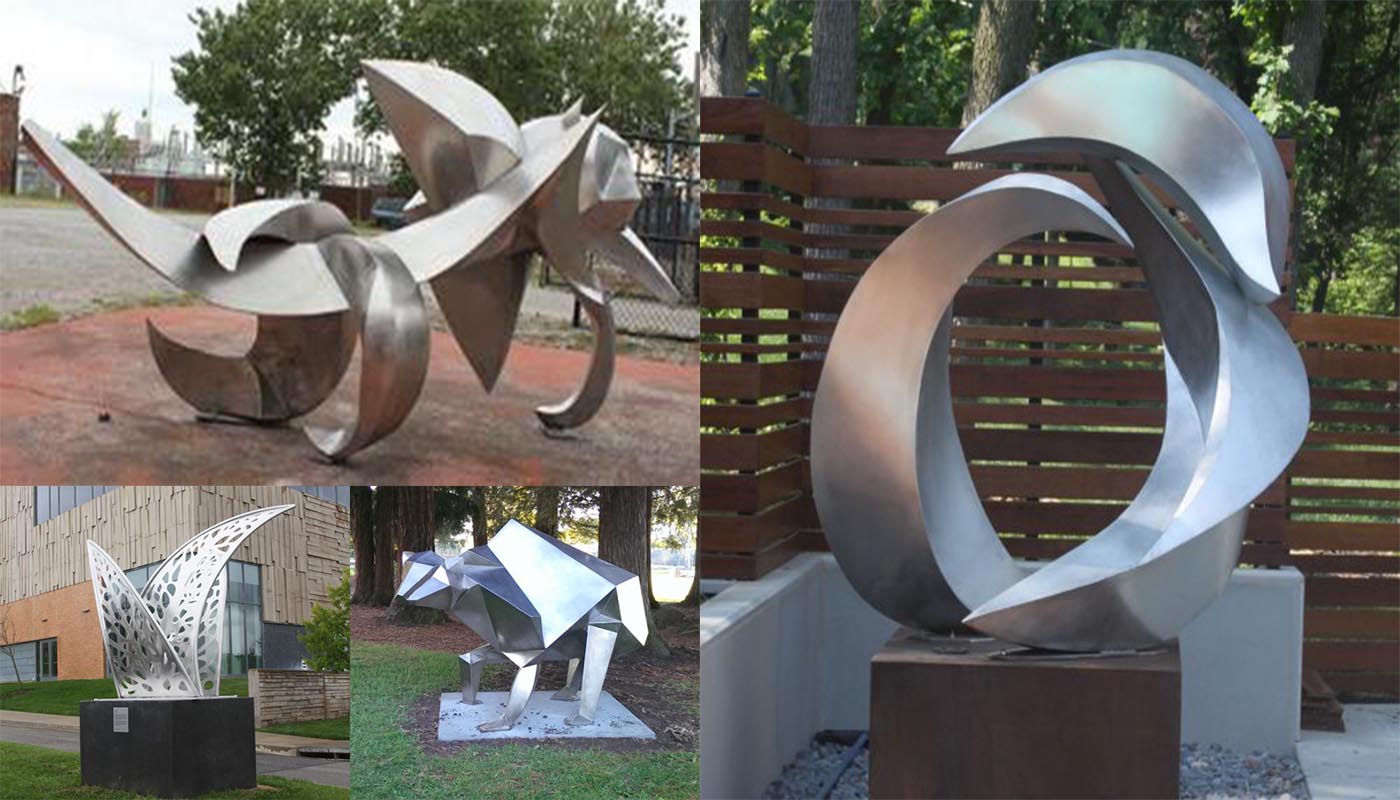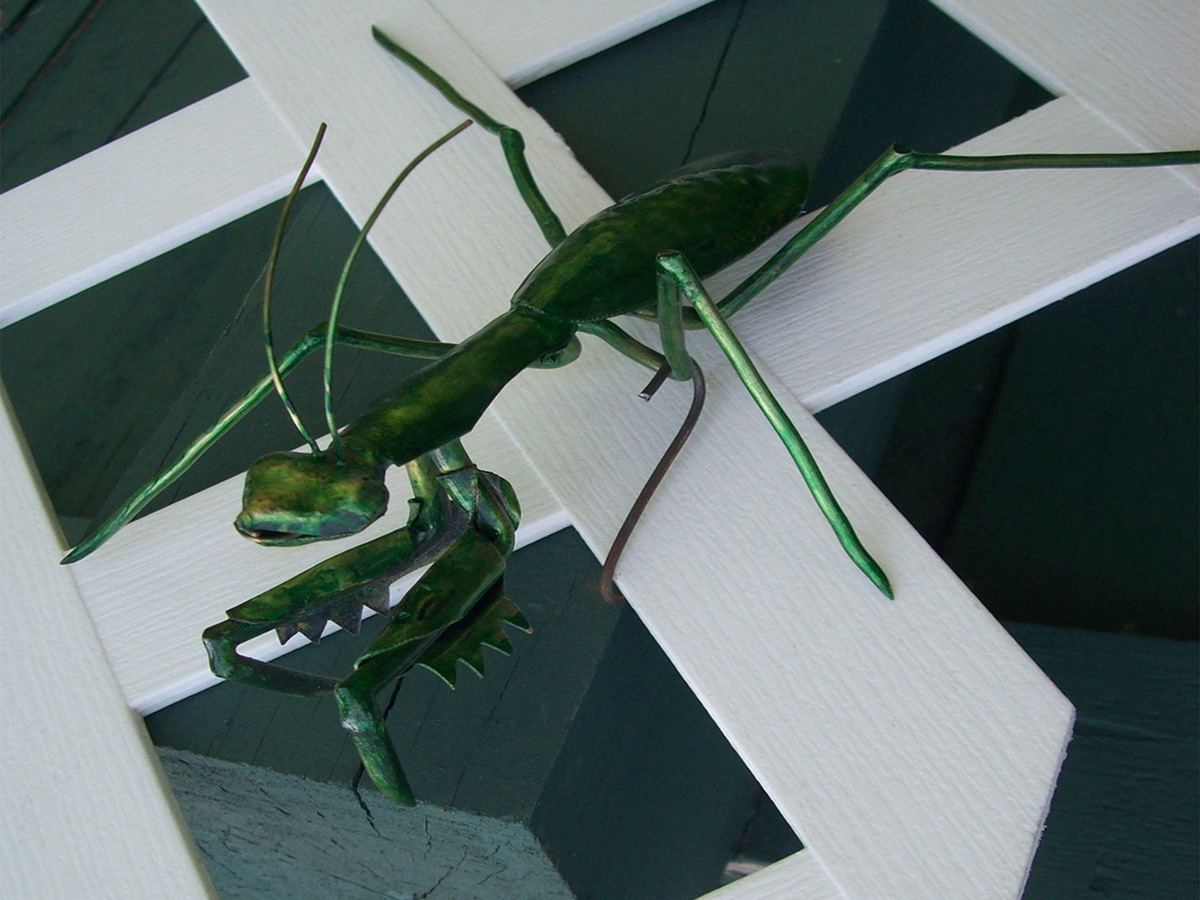October 2016 – These distinguished gentlemen, and an army of others, each had a hand at one time or another with either the construction or renovation of Lady Liberty. Different times, different circumstances, but the same outcomes. Building or maintaining our National Symbol of Freedom.
In just about the entirety of planning, timing is everything. Did you know that the beacon of hope that greeted immigrants to our great country was once painted? Had Permalac been around back then, maybe we’d have a shining copper Statue of Liberty in New York Harbor. Timing.
In fact, the timing of the original plans wasn’t so good either for Lady Liberty, the Government of France or the United States Government. The idea of “The Great Colossus”1 began in 1865, and it took ten years for sculptor Frederic Auguste Bartholdi to be commissioned to lead the
project, with the Centennial of the Declaration of Independence as the planned ceremony, 1876.
Excuses, Reasons, Excuses
France and the USA were both under enormous financial strain at the time, and therefore creative means of fund raising became routine on both sides of the Atlantic. It was agreed the US would be responsible for the location and the construction of the footing, and the French would cover the costs involved in shipping, handling and installation of the finished statue beyond its cost of creation.
In France, lotteries, public fees, entertainment events and other forms of public funding were utilized, while in
the US, theatrical events, art auctions, even prize fights were used, but in both countries, raising money at that time was not easy.
While all this money trouble occupied many citizen’s time, Bartholdi, the sculptor, sought out the assistance of the man that build the Eiffel Tower, Alexandre Gustave Eiffel2, for his insight into stru ctural integrity. The estimated delivery of Lady Liberty was slipping due to lack of funding, design concerns, and public opinion.
ctural integrity. The estimated delivery of Lady Liberty was slipping due to lack of funding, design concerns, and public opinion.
Joseph Pulitzer,3 through the editorial pages of his newspaper, “The World’, was direct and to the point regarding the lack of keen interest in the project by the American people. He harshly criticized the wealthy for their withholding of some of their wealth toward this great national project, but he also admonished the middle class for their expectation of the wealthy and well-off handling the entire donation. Both economic groups begrudgingly contributed towards that effort.Although long past the original plan, the project was finally completed. An excerpt describing the final steps of the installation of Lady Liberty:
“Architect Richard Morris Hunt designed the Statue of Liberty’s granite pedestal in 1884, donating his fee to help fund the Statue. Financing for the pedestal was completed in August 1885, and pedestal construction was finished in April 1886. The Statue was completed in France in July 1884 and arrived in New York Harbor in June 1885 on board the French frigate “Isere.”
In transit, the Statue was reduced to 350 individual pieces and packed in 214 crates. The Statue was reassembled on her new pedestal in four months’ time. On October 28, 1886, President Grover Cleveland oversaw the dedication of the Statue of Liberty in front of thousands of spectators. She was a centennial gift ten years late.
What! No Permalac?
Had Permalac been around near the turn of the 19th century into the 20th, Congress would not have appropriated $62,000 to paint her. The public outcry was rabid. Newspapers referred to the idea as sacrilegious, while others felt the fact the statue was turning green. Influential politicians pushed for painting the sculpture as a means of protecting the metal’s integrity, but the citizenry would hear none of it.
Had Permalac been around a hundred or so years ago, things would be different. Because the outer shell of the statue is thin, it still would have taken more than 30 million copper pennies to form the complete covering. The weight of the metal, 3/32 of an inch4 is remarkably thin, but the green patina is actually nature’s protective coating. Permalac EF could have been used on the exterior, and Permalac Black internally.
Move Time Forward
Bedloe’s Island, where Lady Liberty stands, didn’t have a name change until 1956, when it was changed to Liberty Island. Both Bedloe’s and Ellis Island’s maintenance had changed hands over the years, from the Lighthouse Board to the D
epartment of War. Lady Liberty is positioned on a pedestal within Fort Wood, which was constructed for the War of 1812. It later had a transfer of maintenance and management when both Ellis and Bedloe’s Islands were combined under the National Park Service in 1965. It maintains and oversees all aspects of the Islands to this day.
 By 1982, Lady Liberty was in much need of repairs. President Ronald Reagan5 appointed the Chairman of the Chrysler Corporation, Lee Iacocca6, to spearhead the $87 million public/private restoration funding for her upkeep. The project swelled to more than $233 million, and, although controversy arose, Iacocca did the near impossible at the time.
By 1982, Lady Liberty was in much need of repairs. President Ronald Reagan5 appointed the Chairman of the Chrysler Corporation, Lee Iacocca6, to spearhead the $87 million public/private restoration funding for her upkeep. The project swelled to more than $233 million, and, although controversy arose, Iacocca did the near impossible at the time.
Image Credit: Copper Development Association
Beacon of Hope
As we are a nation of immigrants, it is surprising how much consternation swirls about immigration today. Liberty Island, along with Ellis Island has welcomed immigrants with a symbol of freedom and hope.
|
In conclusion
Ask metal artists what they find helps them the most to preserve their art and they’ll probably respond with something like “a metal sculpture’s best friends are Permalac Black and Permalac Clear. Two great defenders of either patina or decorative preservative. I’m confident that IF Permalac was available when the statue was first constructed, reconstructed upon arrival to the US, and the subsequent renovations that have occurred since.
- The Great Colossus – Poet Emma Lazarus 1883 – https://www.poetryfoundation.org/poems-and-poets/poems/detail/46550
- http://www.libertyellisfoundation.org/statue-history
- Alexandre Gustave Eiffel – https://www.nps.gov/stli/learn/historyculture/alexandre-gustave-eiffel.htm
- http://www.stampsofdistinction.com/2008/07/9-facts-that-you-might-not-know-about.html
- Ronald Reagan – https://youtu.be/V0umebqc8FI
- Lee Iacocca – http://articles.latimes.com/1986-02-13/news/mn-23184_1_iacocca







Leave A Comment